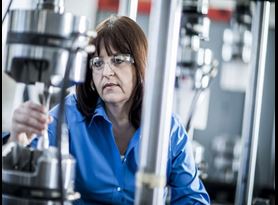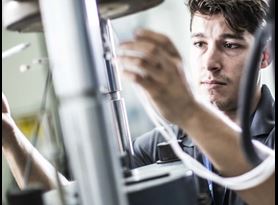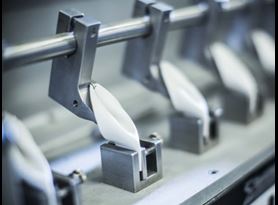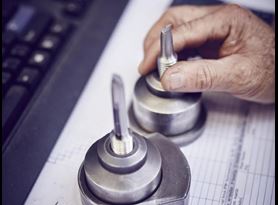Article
Re-Examining the Role of Sulfur and Manganese Properties in Cast Iron

By Engaged Expert
Richard Gundlach
通过literature review and experimental research, Element’s Engaged Expert Richard Gundlach re-examined the roles of Manganese (Mn) and Sulfur (S) on the strength of gray iron.
Sulfur is often considered a tramp element, or an undesirable contaminant in metals. Gundlach’s research helped dispel the negative connotation associated with Sulfur in cast iron and in doing so found its inclusion to have many positive benefits when combined with appropriate quantities of Manganese.
A review of literature showed there are two main regions in gray iron chemistries. One of these regions is where Mn and S levels are below the solubility of MnS at the solidification temperature, the other region is one that is above the solubility limit. Twenty-four heats were created in various cast sections (up to 3 inches) to indicate the effects of S on strength utilizing various level of Mn. At different Mn levels, S was increased from low concentrations up to levels above the point at which MnS precipitated in the melt prior to reaching the eutectic temperature.
Master heats were created at three Mn levels (0.3%, 0.5% and 0.8%). Sulfur was varied from 0.01% to 0.15%.Chemical analysis类35铁是否则典型的灰色iron at a carbon equivalent (CE) value of 3.9 to 4.0 and sufficient alloying with Cu and Sn to assure a fully pearlitic structure.Mechanical testingwas completed to provide tensile strength, hardness, chill width, and thermal arrests.
The results of the tensile tests were as follows: tensile strength first increased with sulfur, reaching a maximum peak value, followed by a decrease (in strength) with further increases in sulfur. Maximum strength coincided with the solubility limit of MnS inclusions. Using the 1.2 inch B test bar, strengths reached 42 ksi; while using the 3 inch diameter test bar, strengths reached 36 ksi. For each Mn series, the differences in strength between maximum and minimum values were 44% and 38% for the B test bars and 3 inch bars, respectively. Variations in chilling tendency were modest, except at the extreme lowest and highest S levels.
Find related articles to you through theNucleus
INFLUENCE OF Mn AND S ON THE PROPERTIES OF CAST IRON PART III - TESTING AND ANALYSIS
Originally appearing in International Journal of Metalcasting (IJMC) and offered by Element with permission from American Foundry Society.
making certain for nearly 190 years
More from Element

The Effects of Alloying Elements on the Continuous Cooling Transformation Behavior of 2¼Cr-1Mo Steels
Element’s experts examine the effects of alloying elements on the Continuous Cooling Transformation behavior of 2¼Cr-1Mo steels.
Read More

Mechanical Testing
Element's mechanical tests show whether a material or part is suitable for its intended mechanical applications.
Read More

Non-Metallic Material Failure Analysis
We conduct failure analyses of a wide range of advanced materials, including rubber, adhesives and sealants, paints/coatings and composite failure analysis.
Read More

3 Reasons to Perform Failure Analysis
Nothing is truly "unbreakable" and failure analysis gives insight into a material's ultimate breaking point.
Read More
